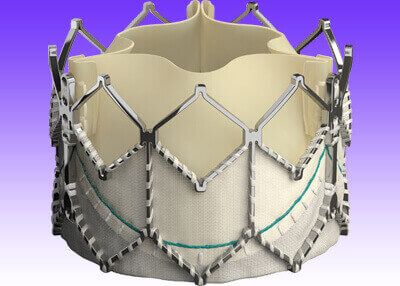The degeneration of bioprostheses in aortic position occurs at approximately after 10 to 15 years. In this scenario, the treatment of choice used to be redo surgery, but with the evolution of transcatheter aortic valve replacement (TAVR), it became a valid alternative with a level IIa B evidence.

While there are currently multiple analyses of Valve-in-Valve (V-in-V), most share the limitation of a one-year-long follow-up, without knowing its true evolution in the medium and long term.
Researchers conducted an analysis of 188 patients who underwent V-in-V between 2013 and 2019 at the Cleveland Clinic.
The primary endpoint (PEP) was all-cause mortality and hospitalization due to heart failure.
Mean patient age was 76 years old, and 65% of subjects were male. Twenty-eight percent had diabetes, 20% had acute myocardial infarction, 29% had undergone coronary angioplasty, 43% had undergone prior myocardial revascularization surgery, 54% had atrial fibrillation, and 15% had a permanent pacemaker.
The Society of Thoracic Surgeons score was 7.2%.
Ejection fraction was 52%, and mean aortic gradient was 37 mmHg. Before replacement, 32% of bioprostheses were for the bicuspid aortic valve.
Most procedures (95%) were done via transfemoral access, and 81% were performed under conscious sedation.
Balloon-expandable valve was the most frequently used device (82%).
Mortality rate at 30 days was 1.6%, while hospitalization due to heart failure was 4.2%.
The PEP at 2 years was 22.9%, all-cause mortality was 8%, and hospitalization due to heart failure was 14.9%. Stroke and endocarditis rates were 3.7% and 2.7%, respectively.
Read also: Severe Mitral Regurgitation and Cardiogenic Shock: Is Edge-to-Edge a Valid Strategy?
There were no differences in the rates for all-cause mortality and hospitalization due to heart failure between patients with annular diameter > or <21 mm, nor in terms of the Heart Team risk assessment or whether the valve was a self-expanding or balloon-expandable device.
Conclusion
V-in-V was associated with clinical and hemodynamic evolution at 2 years. More studies are warranted to better comprehend the role of V-in-V as therapy.

Dr. Carlos Fava.
Member of the Editorial Board of SOLACI.org.
Original Title: Two‐year outcomes after transcatheter aortic valve‐in‐valve implantation in degenerated surgical valves.
Reference: Abdelrahman I. Abushouk, et al. Catheter Cardiovasc Interv. 2022;100:860–867.
Subscribe to our weekly newsletter
Get the latest scientific articles on interventional cardiology





